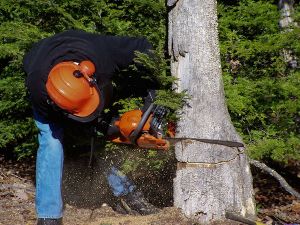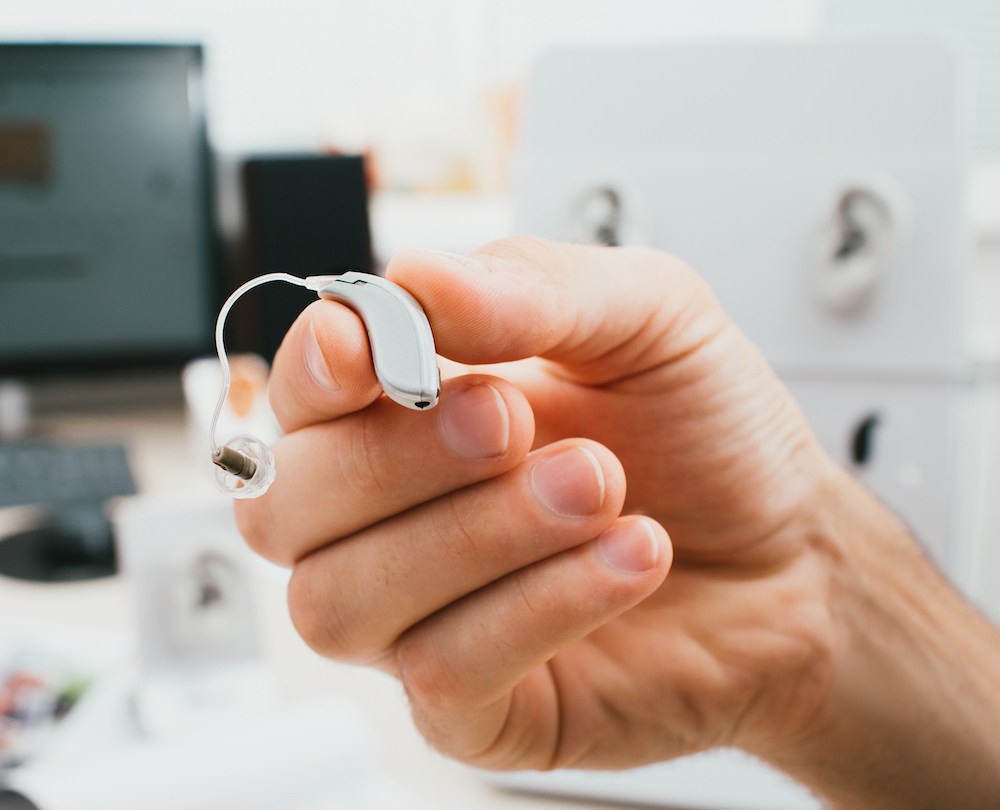How Wearable Tech is Merging with Hearing Aids
Decades of research have revealed a clear link between hearing loss and

By: admin | March 5, 2015
It may be 12 degrees outside right now, but spring is around the corner. With the hope of warmer weather on the horizon, it’s time for spring cleaning … for your yard. Once the snow melts, it’s easy to see all of the havoc that ice, snow and howling winds have wreaked during winter. Looking around, there’s nothing but dead leaves, fallen branches, downed trees and those lingering piles of filthy snow; so you decide to schedule a weekend of yard work to get things back in shape. But did you know that all of that yard work can actually put you at risk for hearing loss? Many appliances and tools we use to get our yards into shape are far too loud for our ears, easily surpassing the safe range of 85 decibels (dB). The good news is there are steps you can take to reduce your risk of noise-induced hearing loss while sprucing up your outdoor space at the same time.
Let’s look at a seemingly harmless activity: mowing the lawn. Did you know that a typical lawn mower runs at about 100 dB? At that level, it’s only safe to mow your lawn for 15 minutes before hearing loss can occur! Before you fire up that lawn mower, make sure you are wearing ear protection to avoid possible hearing loss. And if you have a small, flat area to mow, consider an electric or battery operated lawn mower, which is much quieter than a gas-powered lawn mower. After mowing, you might want to put the finishing touches on your lawn with a string trimmer; although perfect for trimming around trees and edges, at 100 dB, they can be loud. Quieter electric versions are available, or you can switch out your trimmer line with a quieter version specially designed with grooves to reduce noise. Next you might be tempted to grab the leaf blower to quickly clean out any leaves that fell late in the fall. But since a gas leaf blower typically registers at over 95 dB (safe for 45 minutes of exposure) it might be a good idea to stick with a good old fashioned rake, which can often do the job just as quickly. For speed and safety, consider borrowing or investing in an electric leaf blower, which tops out at a decibel level of about 80. Do you have a garden? If it’s time for spring planting, you’ll want to turn over the soil first. Work like that usually involves a tiller. Here is another area where your choice of equipment can really make a difference. Gas tillers are upwards of 85 dB (safe for eight hours) whereas electric tillers are only about 68 dB (safe for days). If your garden is close enough to an outlet, an electric tiller is a great option for turning the soil. Also, if you have a small garden plot, a manual tiller such as a U-bar or broadfork may be adequate for your needs. Next let’s turn to those fallen trees and large branches. Instead of a noisy chainsaw, for branches that are six inches in diameter or less, a pruning saw will do the job nicely. For larger branches and logs, the best tool for clearing this type of debris is a chainsaw, but beware; a gas chainsaw is typically anywhere from 106 to 117 dB (safe for two minutes). For the average property owner, an electric chainsaw will take care of the spring or post-storm clean up, and is significantly quieter at about 90 to 102 dB (safe for 15 minutes). While pressure washing your deck is a great way to freshen it up for warm-weather entertaining, a pressure washer can also be loud at over 90 dB. Instead, opt for a stiff-bristled broom to clean your deck. Start by sweeping the deck, and then clean it with a mixture of powdered oxygen bleach and water, letting it sit on the surface for about 10 minutes. Then simply scrub it with the stiff-bristled broom and rinse it with water. Bottom line? If you have yard work to do, there is probably a quieter way to accomplish your task. If it’s time to replace old equipment, ask about noise level before buying. And remember that noise level information is always available from the manufacturer.Since a lot of yard work involves loud equipment that can cause hearing damage, it would be a good idea to purchase good quality pair of protective ear muffs before spring yard clean up gets underway. Look online or at any hardware store to find something fit your budget, as well as asking your hearing healthcare professional which brand they recommend. Remember these tips and tricks to protect your hearing health this spring:
Now that everything is ship-shape outside, it’s time to pour yourself a cold drink, put your feet up, and listen to the sounds of the birds chirping. And remember: With just a few simple precautions, keeping a beautiful yard and healthy hearing can go hand in hand. Reprinted with permission from www.healthyhearing.com. Please visit our site for the original article: https://www.healthyhearing.com/report/52403-Hidden-hearing-dangers-of-spring-yard-work

Decades of research have revealed a clear link between hearing loss and
By: admin | March 26, 2024

Getting your hearing aid fitted can take anywhere from 30 minutes to an
By: admin | December 11, 2023

Finding the right hearing instrument specialist (HIS) is one of the most
By: admin | November 12, 2023
